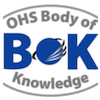Chapter 12.1: Systems
Abstract
Occupational Health and Safety (OHS) is an emergent property of complex systems and cannot be adequately understood or managed without the adoption of a systems thinking approach that considers the overall work system, its many components, and the interactions occurring between them. Although the systems thinking approach is now prevalent in safety science research, a research-practice gap is hindering its application in OHS practice. This chapter provides an overview of the systems thinking approach to OHS, including its theoretical underpinnings and core safety models, and outlines a set of methods that can be applied to understand and manage OHS. The intention is for the reader to gain an understanding of key systems thinking principles and of state-of-the-art systems thinking-based risk assessment, accident analysis, and safety intervention development methods.
Keywords: systems theory, systems thinking, complexity, sociotechnical systems, risk assessment,
accident analysis, incident reporting
First year of publication: 2012
Current Version: 2023
Chapter 12.1: Systems
Table of contents
| 1 | Introduction |
| 2 | An overview of systems thinking |
| 3.0 | Theoretical perspectives underpinning systems thinking |
| 3.1 | Systems theory |
| 3.2 | Complexity theory |
| 4.0 | Systems thinking and OHS |
| 4.1 | Sociotechnical Systems Theory |
| 4.2 | Rasmussen’s Risk Management Framework |
| 4.3 | The Systems Theoretic Accident Model and Processes (STAMP) |
| 4.4 | Drift into Failure (DIF) model |
| 4.5 | The systems thinking tenets |
| 5.0 | Systems thinking and safety management methods |
| 5.1 | Risk Assessment |
| 5.2 | Accident analysis |
| 5.3 | Development and implementation of safety interventions |
| 6 | Implications for OHS practice |
| 7 | Summary |
| References | |
| Appendix 1: The System-Theoretic Process Analysis (STPA) method | |
| Appendix 2: Causal Analysis based on Systems Theory (CAST) method |

Paul M Salmon BSc Hons, MSc, PhD
Professor & co-director, Centre for Human Factors & Sociotechnical Systems University of the Sunshine Coast
A professor in Human Factors, Paul has more than 22 years’ experience of applied Human
Factors research in areas such as workplace and transport safety, defence, healthcare,
sport and outdoor recreation, and cybersecurity. Paul has co-authored 22 books, over 290
peer reviewed journal articles, and numerous book chapters and conference contributions.
His work has been recognized through various accolades, including the Chartered Institute
for Ergonomics and Human Factors 2019 William Floyd award and 2008 Presidents Medal,
the Human Factors and Ergonomics Society Australia’s 2017 Cumming memorial medal,
and the International Ergonomics Association’s 2018 Research Impacting Practice award.

Gemma J.M. Read LLB/BBSc, PGDipPsych, PhD
Associate Professor and co-director, Centre for Human Factors and Sociotechnical Systems
University of the Sunshine Coast
Gemma Read is the co-director of the Centre for Human Factors and Sociotechnical
Systems at the University of the Sunshine Coast. She has more than 16 years’ experience in
applied Human Factors working across academia and government roles. Gemma’s main
areas of research include the application of methods with a basis in complexity science and
systems theory to enhance safety and optimise performance. Her work spans road, rail,
maritime, aviation, construction, sport, outdoor recreation, healthcare, and emergency
response. Gemma has published two books, over 70 journal articles and numerous book
chapters and conference papers. She is an editor for the journal Ergonomics and has
received various awards for her research contribution.

Adam Hulme BSc Hons, MA, PhD
Research Fellow, Southern Queensland Rural Health, University of Queensland
Adam Hulme is a Post-Doctoral Research Fellow at the UQ Centre for Rural and Remote
health at the University of Queensland. He has expertise in applying qualitative and
quantitative methods grounded in systems theory to enhance the performance and safety of
complex sociotechnical systems. Adam’s extensive publication list includes journal articles,
conference papers and book chapters focused on the use of traditional epidemiological
approaches, HFE models and methods, and computational and simulation modelling
approaches.
Learning Outcomes: Systems
The OHS Body of Knowledge takes a conceptual approach which enables it to be applied in different contexts and frameworks.
To optimise its value for education and professional development learning outcomes have been developed for each technical chapter in the Body of Knowledge.
The learning outcomes as described give an indication of what should be the capabilities of an OHS professional; it is up to those developing OHS education programs, OHS professionals planning their CPD or recruiters or employers selecting or developing people for the OHS function to consider the required breadth vs. depth .
Please read the section on using the learning outcomes before delving into the leaning outcomes of the individual chapters.
Webinars
AIHS Webinar Systems Thinking
This study presents the first steps in the development and evaluation of an investigation toolkit, the Patient Handling Injuries Review of Systems (PHIRES). The PHIRES Toolkit was developed to help OHS practitioners adopt a systems thinking approach to investigating patient handling injuries, underpinned by Rasmussen’s (1997) risk management framework. This paper presents the key findings from the initial development and usability evaluation of the PHIRES Toolkit conducted with ten health services in Victoria. The findings of this study suggest that the Toolkit is effective in helping practitioners apply system-thinking to understand the complex system of factors involved in patient handling injuries.
Date: 2021
Presenter: Michelle Grayland
Source: https://youtu.be/FHyMrXFlr3o
Lectures
Eric Wigglesworth Memorial Lecture: Systems and systems thinking in OHS
Systems thinking is a currently popular philosophy within safety science that is applied to understand and enhance occupational health and safety. This memorial lecture reflects on over twenty years of applied safety research and discusses ten critical lessons learned about OHS management. It includes case study examples covering accident and injury causation, risk and risk assessment, incident reporting and learning, accident analysis, work design, and the development of safety interventions. The practical implications of each lesson learned for OHS are discussed. The lecture closes by looking at emerging challenges for OHS and the need for widespread application of systems thinking.
Date: 2021
Presenter: Paul Salmon
Source: https://youtu.be/LL9ishQXPUg

